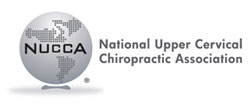The Supine Leg Check (SLC) is a screening test for the Atlas Subluxation Complex (ASC) used by the National Upper Cervical Chiropractic Association (NUCCA). A difference in observed leg length…
THE RESEARCH CHALLENGE: NUCCA ASSESSMENT OF THE ATLAS SUBLUXATION COMPLEX
Defining the basic ‘spinal problem’ in chiropractic has been in dispute since the beginning of the profession. Measuring a ‘bone out of place’ has eluded the vast majority in Chiropractic. While much of the profession has essentially walked away from researching this difficult concept, upper cervical chiropractic has been quietly and accurately measuring and correcting upper cervical misalignments (subluxations) for more than seventy years. The Upper Cervical Research Foundation (originally known as the National Upper Cervical Chiropractic Research Association (NUCCRA) began with fundamental research from the offices of practicing chiropractors concerned with the detection and correction of the Atlas Subluxation Complex (ASC) and the Atlas Subluxation Complex Syndrome (ASCS). This research defined the clinical practice of upper cervical spinal care with a high degree of integrity. It concentrated on careful analysis of the distortions of the head and cervical spine and has developed rigorous protocols for the corrective procedures.
The Atlas Subluxation Complex Syndrome is progressive and degenerative, and is a detriment to human health and well-being. It poses a burden on our society and the health care providers treating the various symptoms and conditions associated with them. It is our hope to bring the awareness of the ASC and ASCS to the attention of the public by facilitating continued research.
Recently, we have restructured and refocused our efforts to bring the benefits of our years of evidence to the attention of scientists and engineers outside of the clinician’s office and beyond the scope of the efforts of researchers in the chiropractic profession. We are biomechanically based and depend on reliable objective measurements utilizing standardized protocols for pre-adjustment and post-adjustment X-rays along with instrumentation for the measurement of body posture and skeletal distortion. It is our long-term clinical experience that postural distortions compromise the overall physiology of the human body.
The research listed here supports the phenomenological experiences of many decades of clinical experience across many clinics through the world. The reliability and validity of the NUCCA protocols and procedures is supported by research and careful study. Further study helps to keep the outcomes of NUCCA clinical care optimal and efficient.






